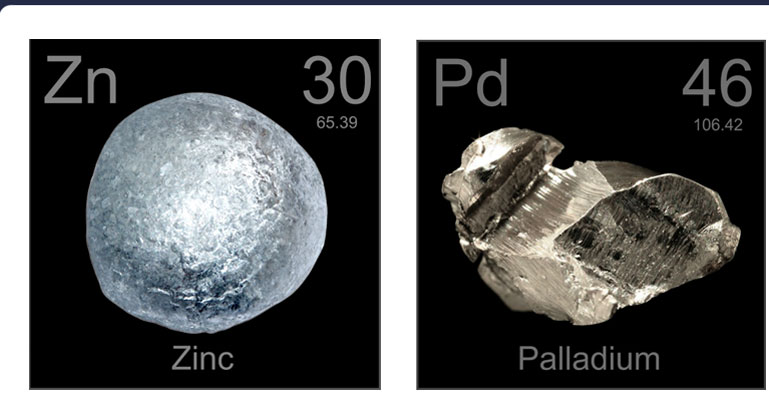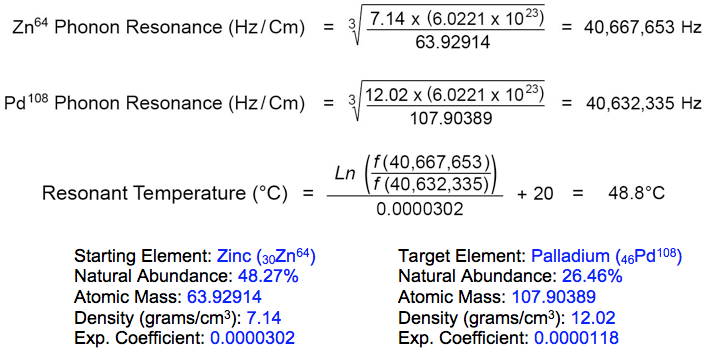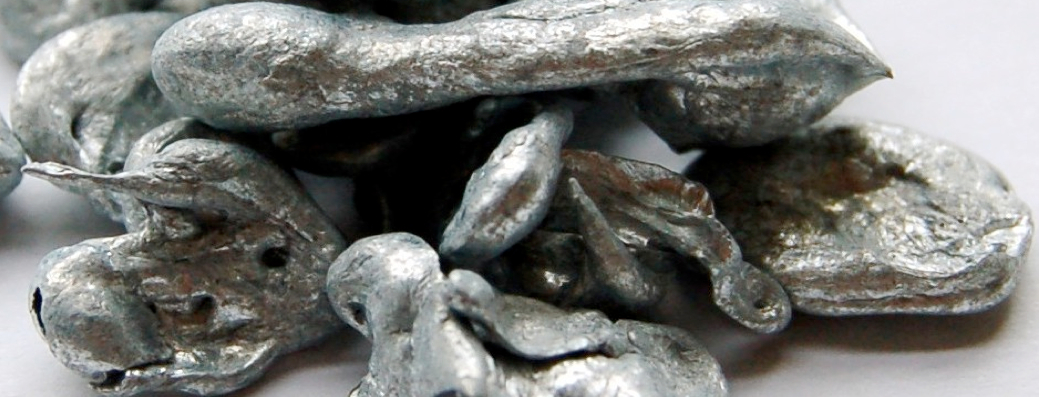




Resonant Atomic Transmutation of Zinc into Palladium
The Geyser Reactor: Zinc to Palladium Transmutation
by Alex Putney for Human-Resonance.org
August 13, 2014
The resonant atomic transmutation of zinc into palladium is achieved by precision control of atomic resonance in a 2-stage reaction that is safe, non-toxic and involves only low energies. Zinc becomes instilled with the resonant atomic frequency signature of palladium, before being rapidly quenched to trigger bulk conversion into palladium --according to the established frequency 'memory' of the standing wave field of each atom.
The first stage of the transmutation reaction maintains the starting element (zinc) at the phonon resonance frequency of the target element (palladium), during a 3-hour dwell time exposed to CO2 gas nanobubbles.
Palladium isotope Pd108 provides the resonant target frequency, as determined by the following formulae (calculated using the latest atomic data sets for the starting element and the target element, provided in blue):

The resonant frequency of palladium isotope Pd108 in its rest state is 40,632,335 Hz, according to the element's atomic diameter at 20°C. Zinc isotope Zn64 resonates at this same frequency when heated to 48.8°C:

The rate of gas absorption (velocity of penetration) into the metal surface interface is enhanced by increased temperature, pressure and electric current. Carbon dioxide gas adsorbed onto metal surfaces undergoes molecular dissociation and subsequent absorption into the crystal lattice of heavier metal atoms (above).
The second stage of the transmutation reaction involves the subsequent trapping of absorbed gases into zinc atoms by the induced shock of rapid cooling. The sudden contraction of the atomic lattice forces the interstitial absorbed atoms into quantum instability as the strongly repulsive nuclear forces of the adjacent metal atoms close in simultaneously on each gas atom from 6 sides (along the x, y and z axes of the lattice).
Instead of rapidly contracting, some of the zinc atoms are able to maintain the previously established resonant diameter by accepting protons, neutrons and electrons from 3 adjacent trapped gas atoms, thereby increasing the atomic weight of zinc atoms to induce the formation of palladium.

The face-centered cubic structure of the metal's atomic lattice allows for a maximum of 6 interstitial gas atoms being adjacent to any one metal atom, limiting maximum total conversion during the reaction to 1/4 (~25%) of the total number of metal atoms. In the optimized case of complete saturation of absorbed gases, the transmutation of zinc into palladium can achieve a maximum weight increase to 109.5% of the original mass, leaving 75% of the zinc atoms unaltered and the remaining 25% converted into palladium --increasing in weight to become 137% of the total original mass.
Zinc to Palladium
The carbon dioxide-dependent low energy transmutation of zinc atoms into palladium atoms occurs after prolonged absorption of carbon dioxide during precision heating to 48.8°C phonon frequency resonance with palladium (Pd108 isotope.
* Zinc is heated to 48.8°C with CO2, absorbing carbon and oxygen atoms to form palladium atoms during rapid cooling:

Carbon dioxide (CO2) gas comprises the exact atomic mass required for the conversion of zinc into palladium, dissociating into carbon and oxygen atoms that combine with individual zinc atoms in groups of 3 adjacent interstitial gas atoms as (C + 2 O). Resonant atomic mass recombination patterns between gas and metal atoms are as follows:

From the book The Geyser Reactor
Continue with Zinc to Copper Transmutation
Return to the article The Geyser Reactor
Copyright 2013-2015 Alexander Putney